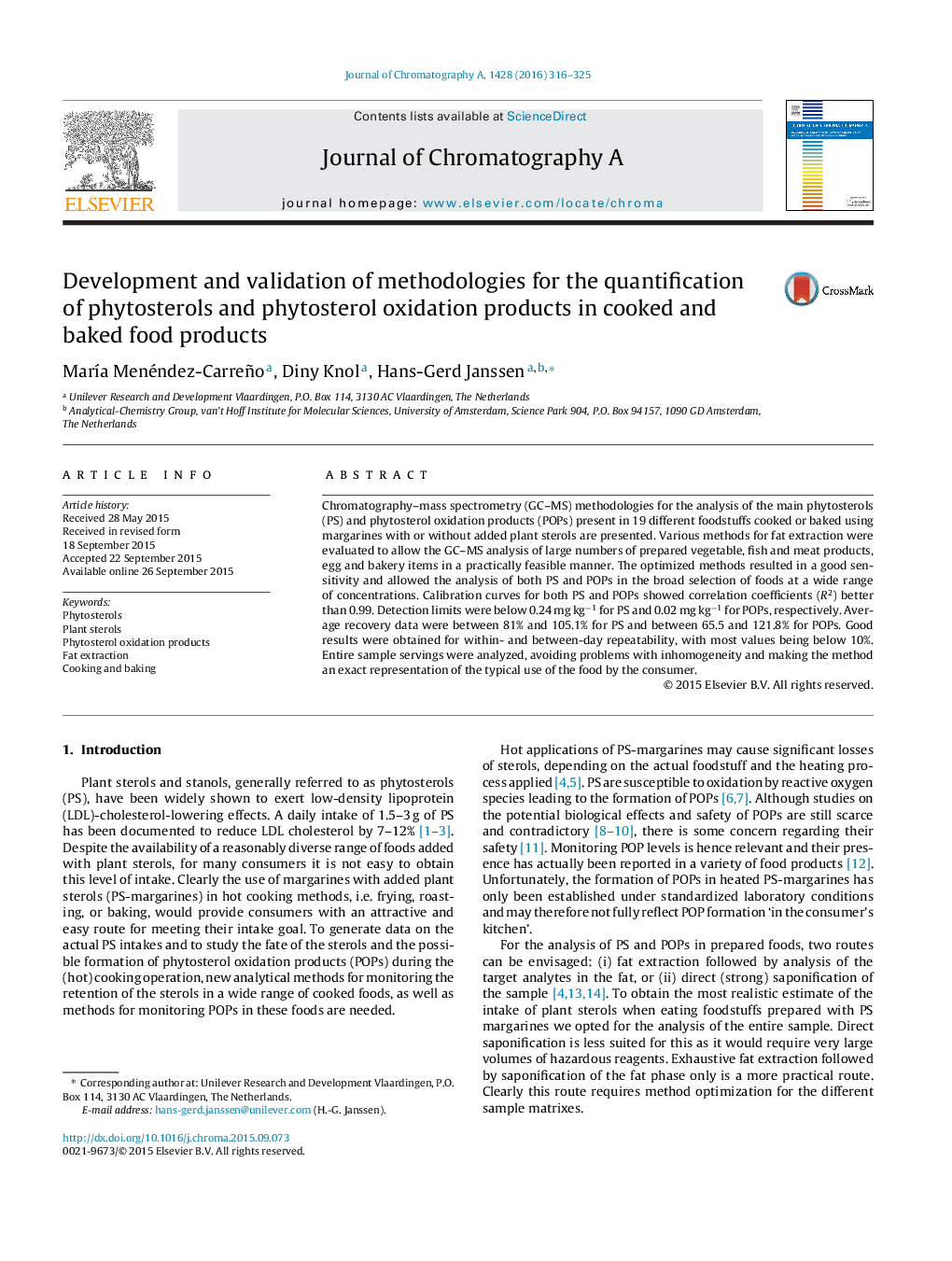| Article ID | Journal | Published Year | Pages | File Type |
|---|---|---|---|---|
| 1199049 | Journal of Chromatography A | 2016 | 10 Pages |
•GC–MS methods for phytosterols (PS) and phytosterol oxidation products (POPs) analysis in processed foodstuffs were developed.•Fat extraction from entire sample servings makes the method an exact representation of the typical use of the food by the consumer.•Method reliability, selectivity, sensitivity and accuracy allowed the analysis of over 600 samples.•First application of methodologies for monitoring PS retention and POP formation when complex food matrices are cooked/baked with PS-margarine.
Chromatography–mass spectrometry (GC–MS) methodologies for the analysis of the main phytosterols (PS) and phytosterol oxidation products (POPs) present in 19 different foodstuffs cooked or baked using margarines with or without added plant sterols are presented. Various methods for fat extraction were evaluated to allow the GC–MS analysis of large numbers of prepared vegetable, fish and meat products, egg and bakery items in a practically feasible manner. The optimized methods resulted in a good sensitivity and allowed the analysis of both PS and POPs in the broad selection of foods at a wide range of concentrations. Calibration curves for both PS and POPs showed correlation coefficients (R2) better than 0.99. Detection limits were below 0.24 mg kg−1 for PS and 0.02 mg kg−1 for POPs, respectively. Average recovery data were between 81% and 105.1% for PS and between 65.5 and 121.8% for POPs. Good results were obtained for within- and between-day repeatability, with most values being below 10%. Entire sample servings were analyzed, avoiding problems with inhomogeneity and making the method an exact representation of the typical use of the food by the consumer.
